

Iraqi artist Maryam Yousif’s ceramic sculptures are influenced by both the ancient mythology and the 90s pop culture of the Middle East. Some of her clay characters carry bags inspired by ancient Assyrian Bas Reliefs, while others wear dresses inspired by Issey Miyake designs. Here, she tells writer Anna Bogutskaya the stories behind five of her favorite creations.
Maryam Yousif didn’t know she wanted to be an artist until college, when she first stepped into a drawing class: “the building sort of called to me – It was dirty, people were weird and I fell in love with that. These are my people,” she thought. Born in Baghdad, her family emigrated to the small Canadian town of Windsor when she was ten. Maryam grew up surrounded by art, mostly through her mother, who was an artist. “Our house was full of paintings and she made little homemade sculptures of flowers,” Maryam says. Her mum “was held back from going into visual arts as a young person, culturally,” so when Maryam was herself supported in her choice to become an artist, it was “a big relief.”
Now known primarily as a ceramicist, she didn’t discover the medium until grad school at the San Francisco Art Institute, when she took a ceramics class which “changed how I thought about making. It wasn’t even the sculpting; it was the clay, the material itself, that changed everything.” Maryam was attracted to clay’s immediacy: “I could have an idea or a narrative in my head and just create it with this material, and translate my paintings and drawings onto it so easily,” she explains. It’s at this time that her work started becoming more personal, incorporating some of the themes that have since become her signatures: “my cultural background, my heritage, my interest in pop culture,” she explains. Her work started incorporating a personal narrative that hadn’t been there before.

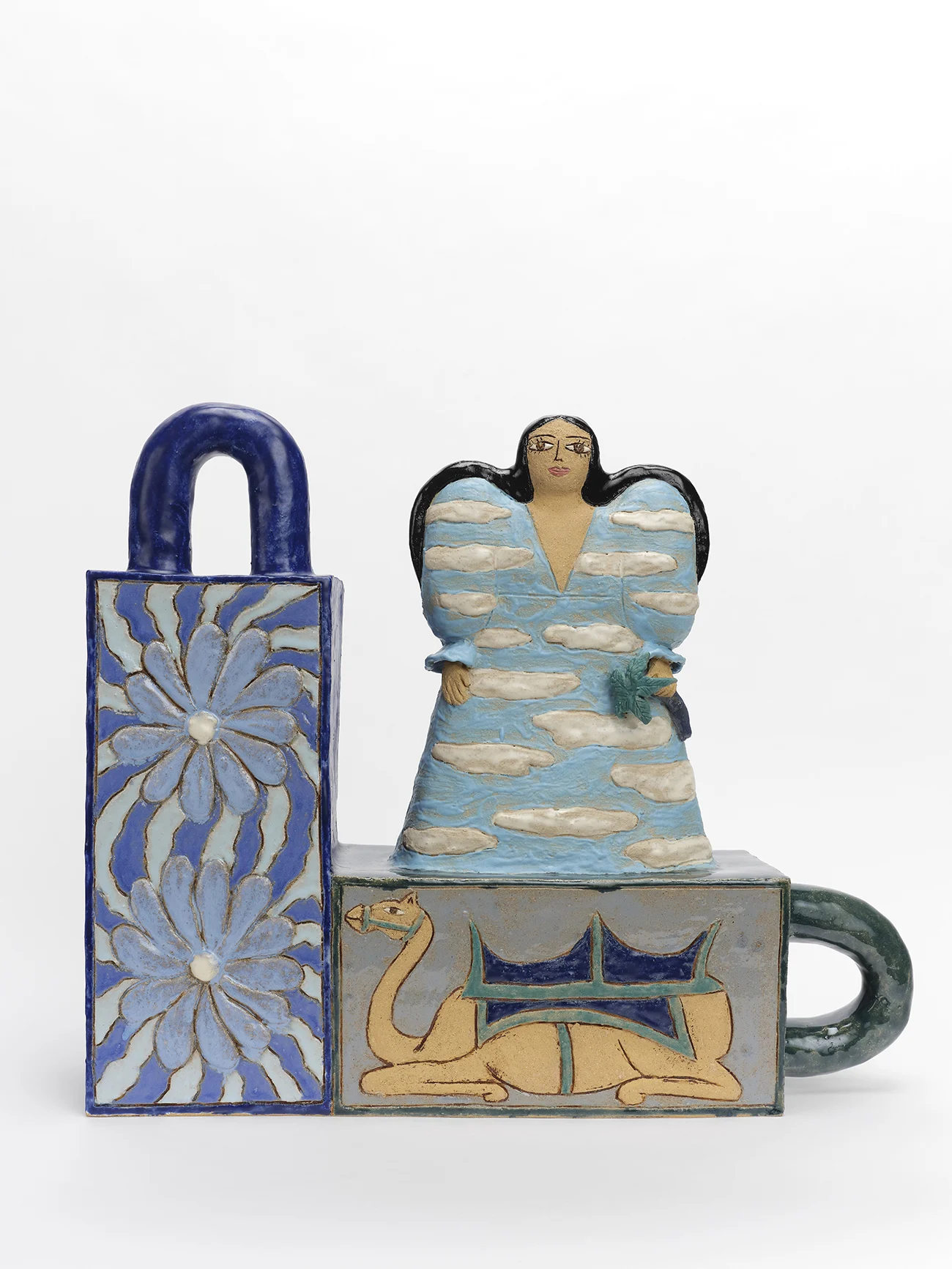
Even though she hasn’t gone back to her hometown since emigrating, nineties pop culture from the Middle East has imprinted on her in a big way. “Things I saw on television as a young girl, female singers like Majda El-Roumi, Fairuz and Warda that my mom would play in the car or around the house, all the graphic elements of the tapes and the music videos,” she recalls, “I listen to them in my studio a lot because it connects me to my childhood and my family.”
Her heritage is a visibly huge influence on her work, but it wasn’t until her first trip to London in 2017 that Maryam saw ancient Assyrian artifacts in person for the first time, like bas-reliefs and an ornamented stone basket at the British Museum. “Which is kind of crazy,” she says, “but it influenced a lot of what I’m doing now.” That visit made her feel access to her past in a way that had previously only been available through images and books. Maryam’s family is Assyrian, originating from the Mesopotamian region, now known as northern Iraq. “This is where I come from, this is my culture,” she says. “I felt this moment of wonder and was so inspired that I could tap into this world.” Directly after that trip, she had a solo show in San Francisco based on “anthropological discoveries I was creating in my mind based on things I’d seen in the museum.”
“I’m channeling everything I’m interested in into what I’m creating,” she says, “I’m infusing pop culture icons, elements of fashion, personal stories and lyrics into these artifacts – so they’re kind of becoming a canvas for everything.”
Humble Throne with Palms
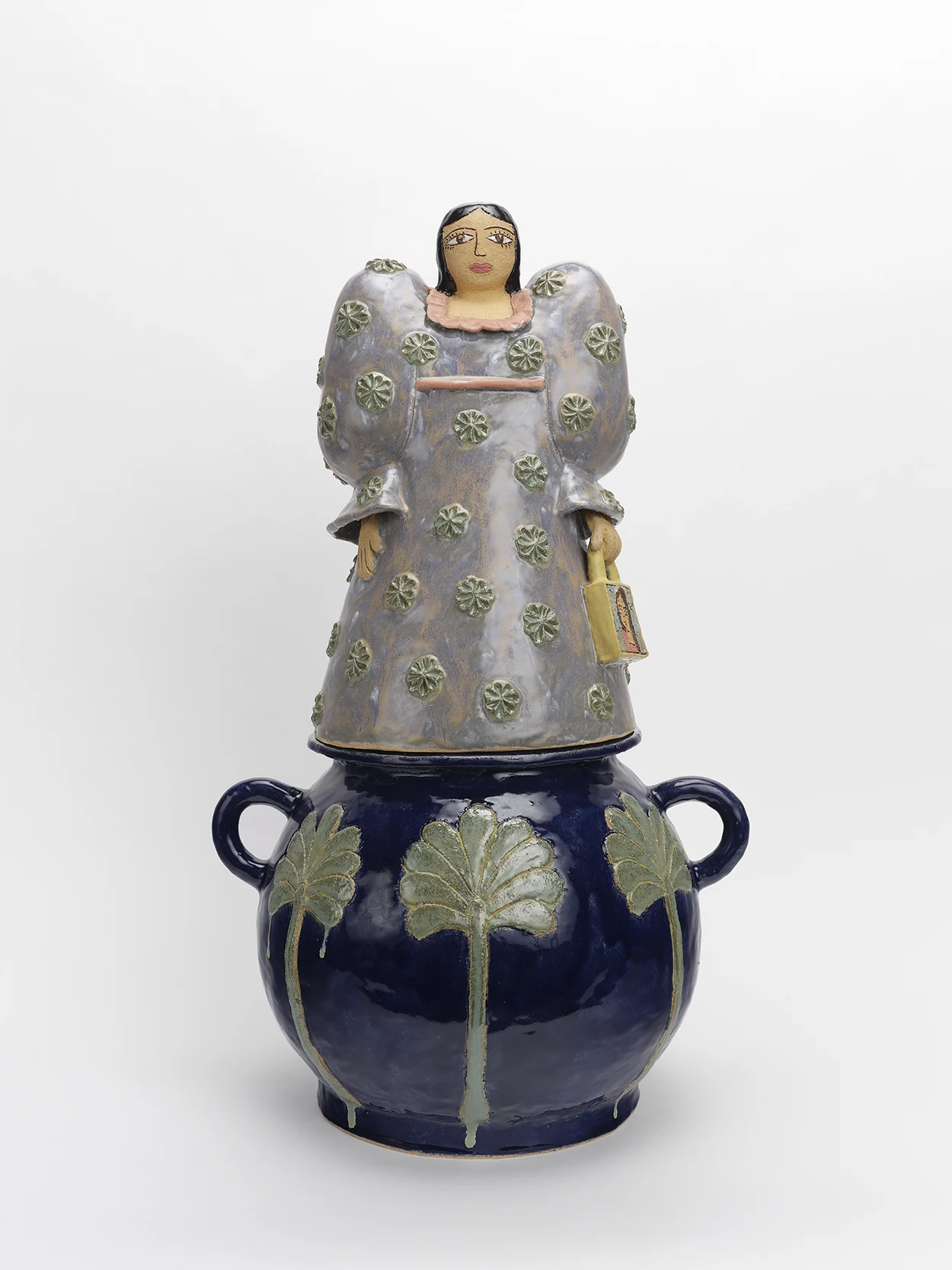
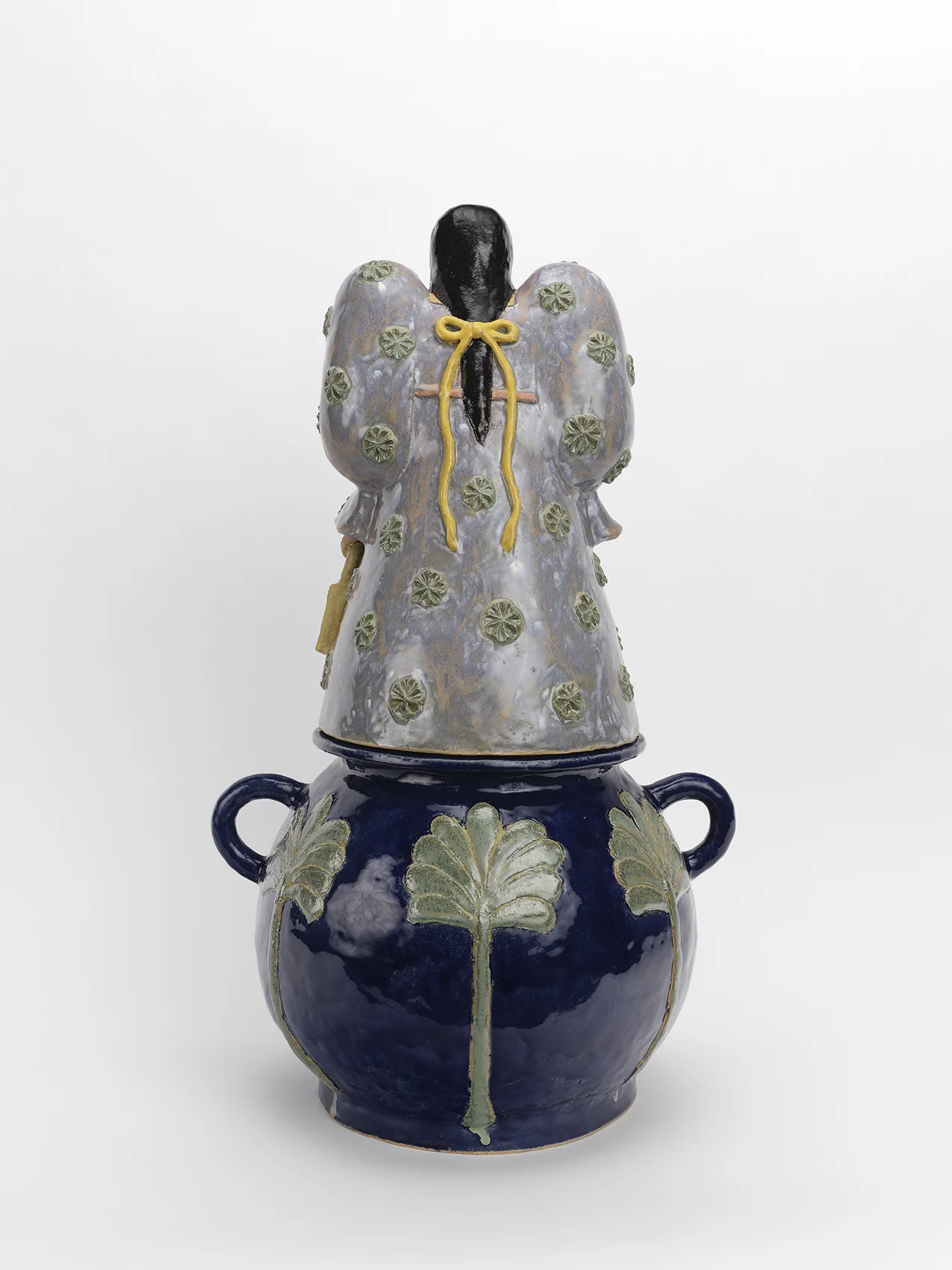
“I started working on this after my last solo show in The Pit in LA. The theme was a Mesopotamian fashion show called Nineveh Fashions, and the whole exhibit contained 14 of these votive figurines in wild dresses,” Maryam explains. “When you’re working with ceramics and clay, it’s really easy and intuitive to just make a pot, which is a very humble form. It’s something that's been around for as long as humans have and it has the sort of functional and practical kind of associations with it, but I wanted to make it into a base or a throne for this character.” Making the pot into a throne, detailed with “palm trees derived from ancient Assyrian Bara leaves,” gives Maryam’s character a regality.
This piece has “the different forms interact with each other. The bags have these figurines on them and the figurines carry the bags,” Maryam says. With the exhibition having a fashion show theme, of course, she “wanted to give her a really powerful garment.”
Cosmic Basket Spring Sensations

This is where I come from. This is my culture.
“There are these really wild characters: supernatural protective bird gods that would carry baskets which, from what I’ve read, contained water to fertilize the trees with. It’s a whole mythological thing,” laughs Maryam, referring to the Lamassu, a protective celestial being from ancient Mesopotamian beliefs with the head of a man, wings of an eagle and body of a bull.
“I love the idea of making a vessel and figuring out what I can put in it,” she adds. This piece is called “Spring Sensation”, because “I was pregnant and kind of overflowing with growing life at the time. I wanted to push the concept. I was making these bag sculptures and the girls would carry the bags so I decided the girls would also carry baskets that had all these different things in them like jewelry, plants or flowers.”
Cosmic Handbag Black Rose
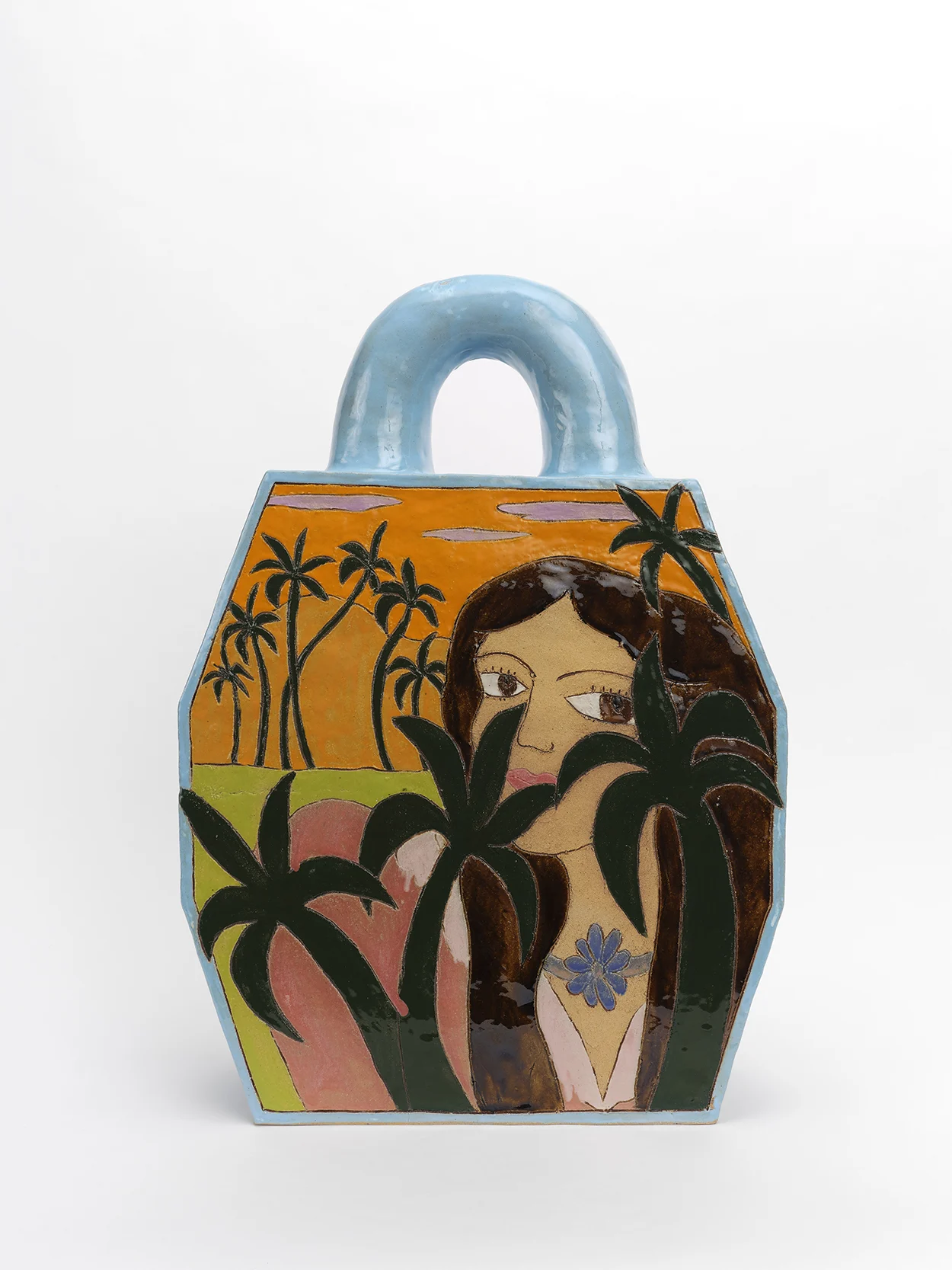
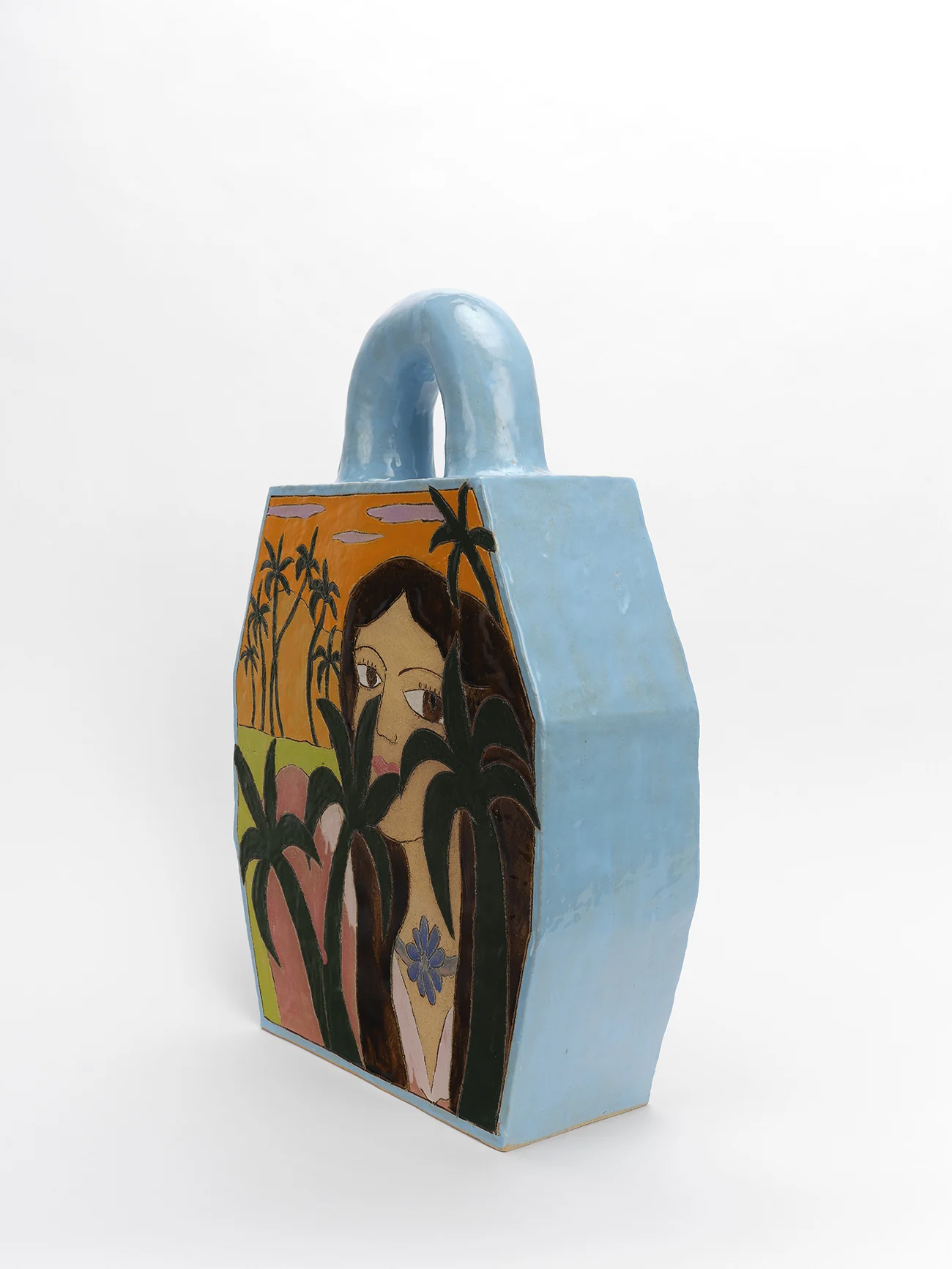
Maryam’s visit to the British Museum introduced her to these bags, “basically a rectangle with a handle which looks like a handbag, but is made out of stone and has these carvings of stars and eyes.” After she came home, she made many versions of it, “because it was simple, but kind of spiritual and mysterious.” Often, her work begins with that simple shape, before she decides “how to decorate that surface, and what I want to say on this particular bag. With this one, I was thinking of a desert theme and having my main character on the bag but covered in palm trees. It’s a really fun way to play with color and composition.”
The woman featured on the piece recalls the kind of Middle Eastern record covers – featuring commanding-looking women with big hair and shiny earrings – that Maryam loved growing up. She sends me the cover of a Wanda tape, and the nostalgic influence of this aesthetic on her work is delightfully palpable. “She’s kind of an icon that keeps coming up, this powerful woman that has presence and style. Ultimately it’s like the divas I grew up admiring on television. They were my example of power and glamor, stuff that was really exciting to witness.”
Desert Cinema, a Reflection
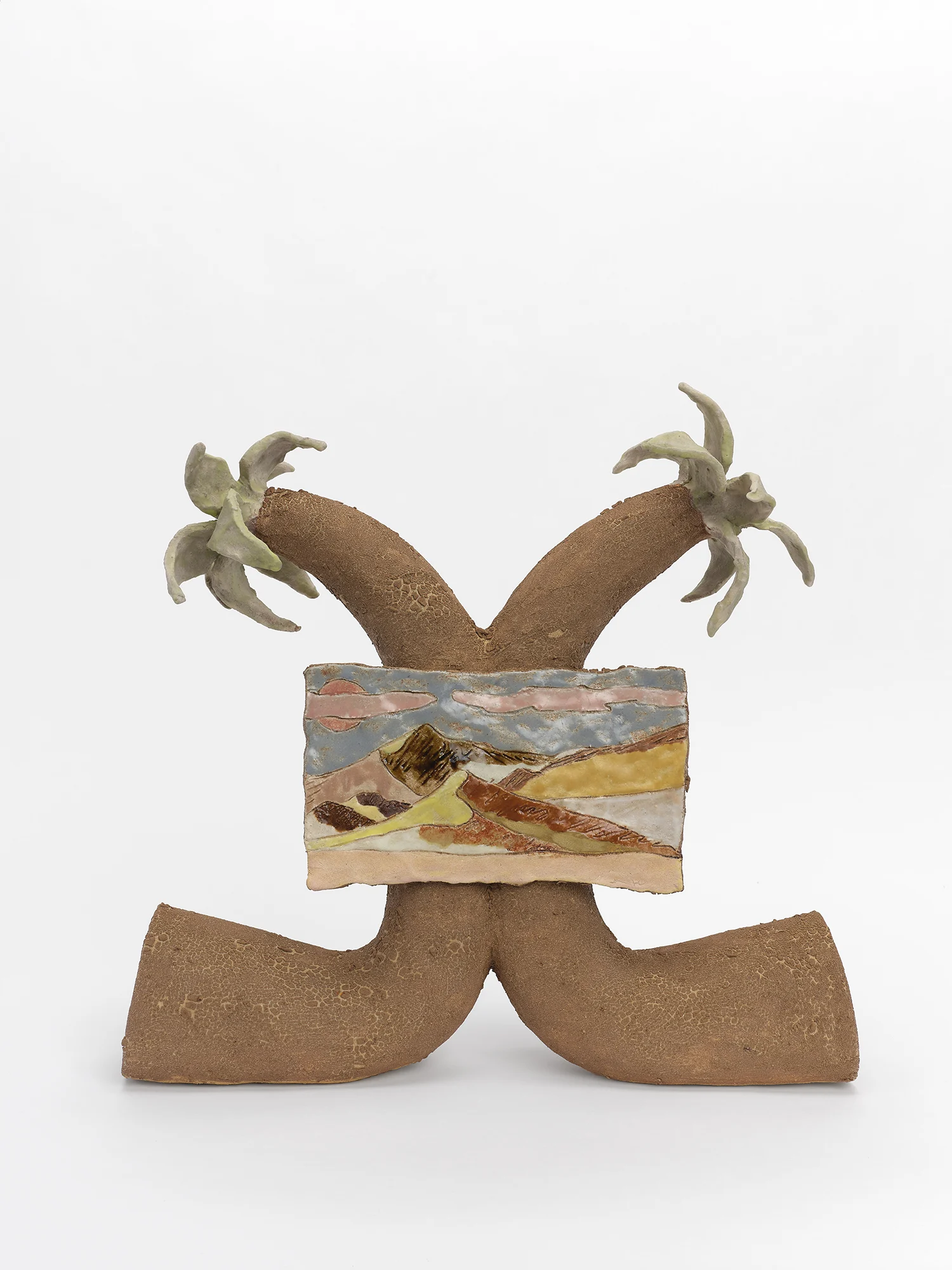
The palm tree is there in the earliest examples of art and has nurtured people for all that time.
“I love palm trees,” says Maryam, and in fact a lot of her work features them in one way or another, “I've been making them for a while and they're starting to kind of have a life of their own. I've made these palm trees that have little canvases on them where I could paint things, and they can hold charm necklaces. I’m interested to see how I can push that palm to do things. They're becoming a sculptural form in my work that holds all these other elements too.”
It’s pretty straightforward symbolism for Maryam. “I’m from the Middle East and the palm tree is a big part of our history; it’s there in the earliest examples of art and has nurtured people for all that time. The actual fruit of that tree is a big part of our food. I can’t tell you how many dates I’ve eaten. Millions of dates! Even when I was there as a kid and we had sanctions, kids didn’t have chocolate so we were eating date bars that looked like chocolate,” she laughs. “I also just love the tree. I think it's beautiful and it stands for so much of what I love and care about.”
Habibti in Issey Miyake

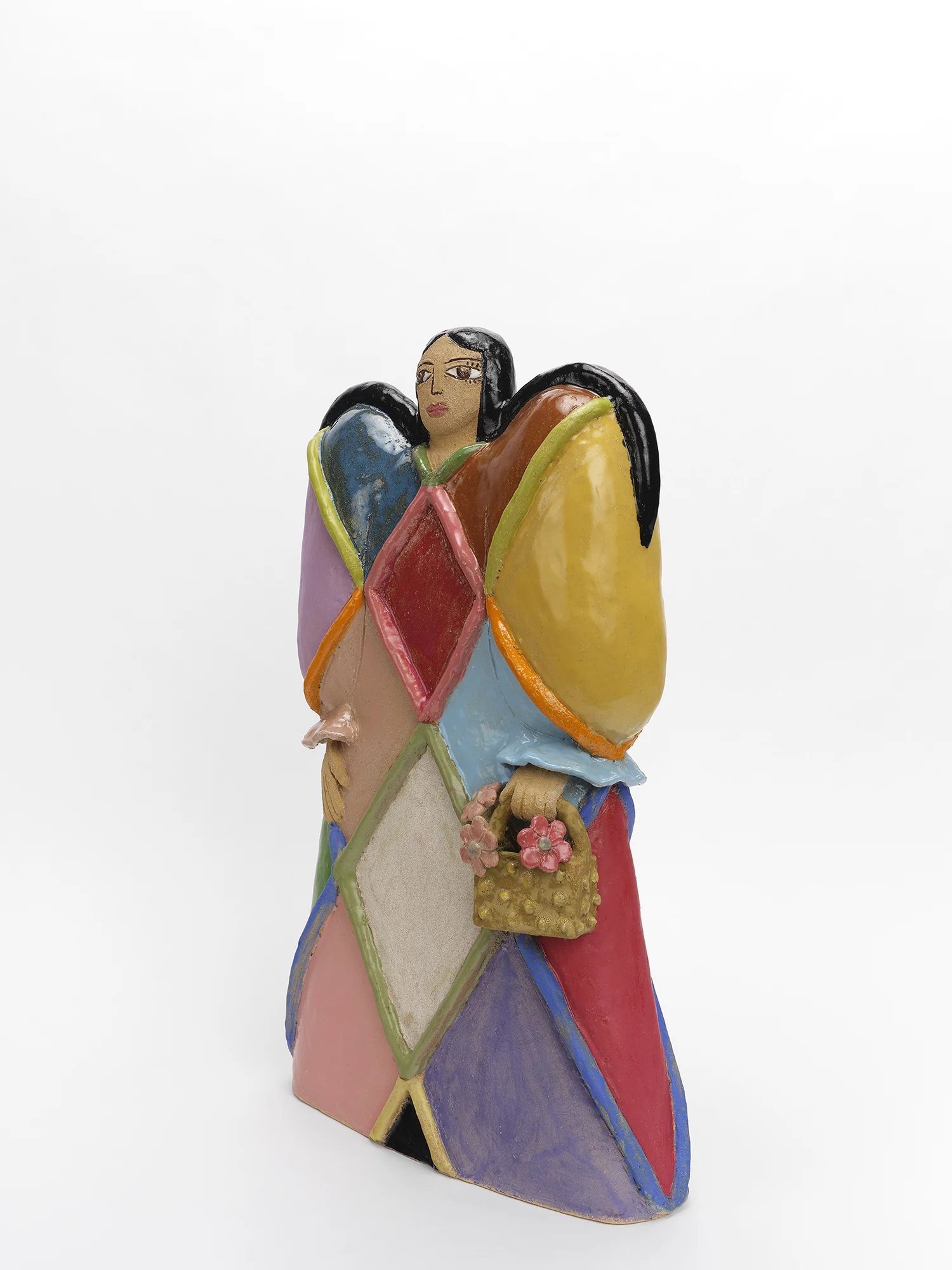
“She is an example of that canvas that I’ll make repeatedly and then figure out ways to adorn her,” Maryam says of this piece. All the women she sculpts she refers to as “her characters,” and she calls all of them “habibti”: “it’s an endearing term, what my mom would call me, ‘my sweetheart’ or ‘my sweet’. So they’re all my sweethearts,” she says.
One of her starting shapes when working on a new piece is based on Sumerian votive figures, which were “ancient little people made out of stone that, if you had the means, you could request be made for you and be placed inside a temple so you could be closer to God. No one was allowed in the temples except priests but people would put versions of themselves inside the temples.” Maryam will take the simple shape of these figures and copy some of the elements between them, enjoying “how simple their facial features are. They all kind of look the same and you don’t know who’s who. I kind of like that,” she says. From that simple, ancient form, she’ll start building up their personalities, “giving them crazy clothes and stealing from contemporary fashion.”
“I love searching online for textiles that I want to create sculpturally. Translating fabric into ceramics is a fun exercise for me. I saw this vintage Issey Miyake dress with pretty Chevron in different colors. The form is really simple; even her hair comes straight from an image from an ancient sculpture I saw of a woman with hair on her shoulders. Everything I make contains elements like these that I’ve taken from somewhere.”

